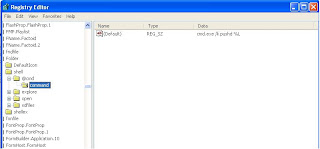
if you get this error, first check your host with oracle user, if you can open xclock. If you can't, run this under root privilledge,
xhost +
but if you can, but still having the same error, follow these instruction.
To manually add the DISPLAY value:
-
Change directory to
$ORACLE_HOME/opmn/conf. -
Back up the
opmn.xmlfile. -
Add a new line of type
in the opmn.xmlfile configuration section for the new Reports server. Use the following example as a guide, wherereportserver_nameis the name of the Reports server, anddisplay_valueis that value of the DISPLAY
..process-type id="ReportsServer" module-id="ReportsServices"..
..process-set id="reportserver_name" restart-on-death="true" numprocs="1"..
..environment..
..variable id="DISPLAY" value="display_value"/..
..variable id="PATH" value="/project1/AS10g/FR_STANDALONE_M23_MAR08/ohome/bin:/usr/bin:/etc:/usr/sbin:/usr/ucb:/usr/bin/X11:/sbin:/usr/java130/jre/bin:/usr/java130/bin:/usr/bin:/bin"/.. -
Reload the
opmn.xmlfile, as follows:$ $ORACLE_HOME/opmn/bin/opmnctl reload
-
Stop and then restart the Reports server:
$ $ORACLE_HOME/opmn/bin/opmnctl stopproc ias-component=reportserver_name
$ $ORACLE_HOME/opmn/bin/opmnctl startproc ias-component=reportserver_name -
Verify that you can run a test report. For example:
http://mydomain.com:7782/reports/rwservlet?destype=cache&desformat=html&server=reportserver_name&report=test.rdf&userid=scott/tiger@twotask
source : http://download.oracle.com/docs/cd/B13597_05/bf.904/b13667/toc.htm




